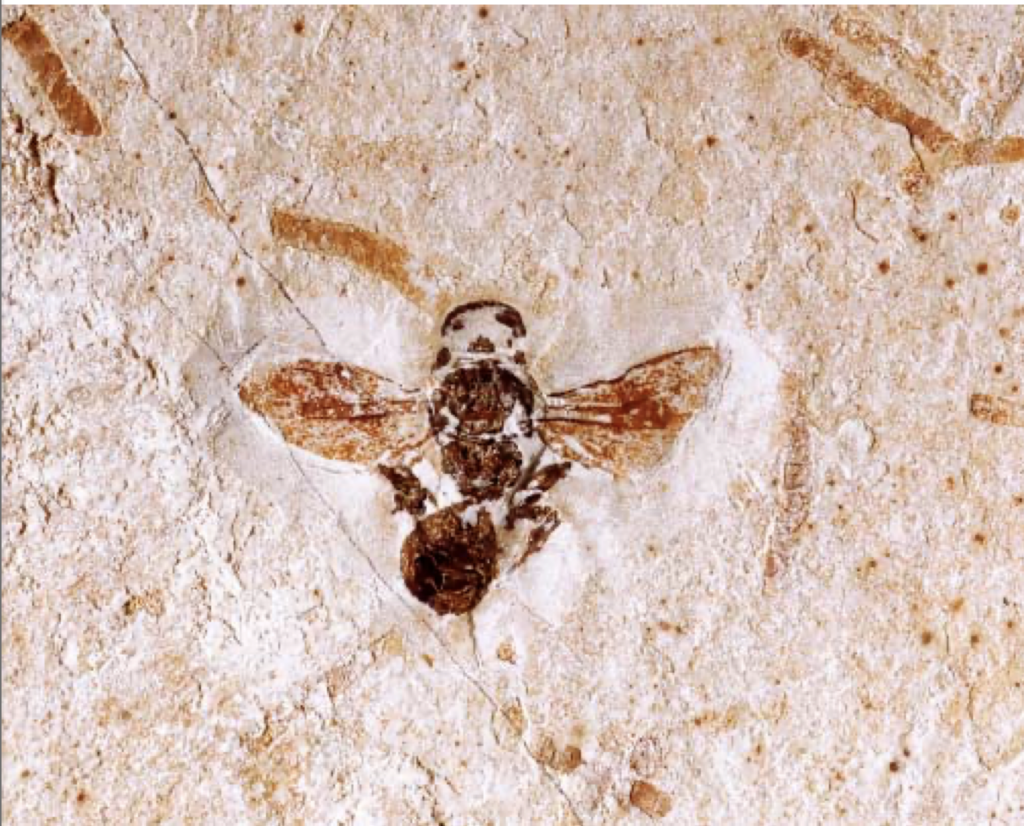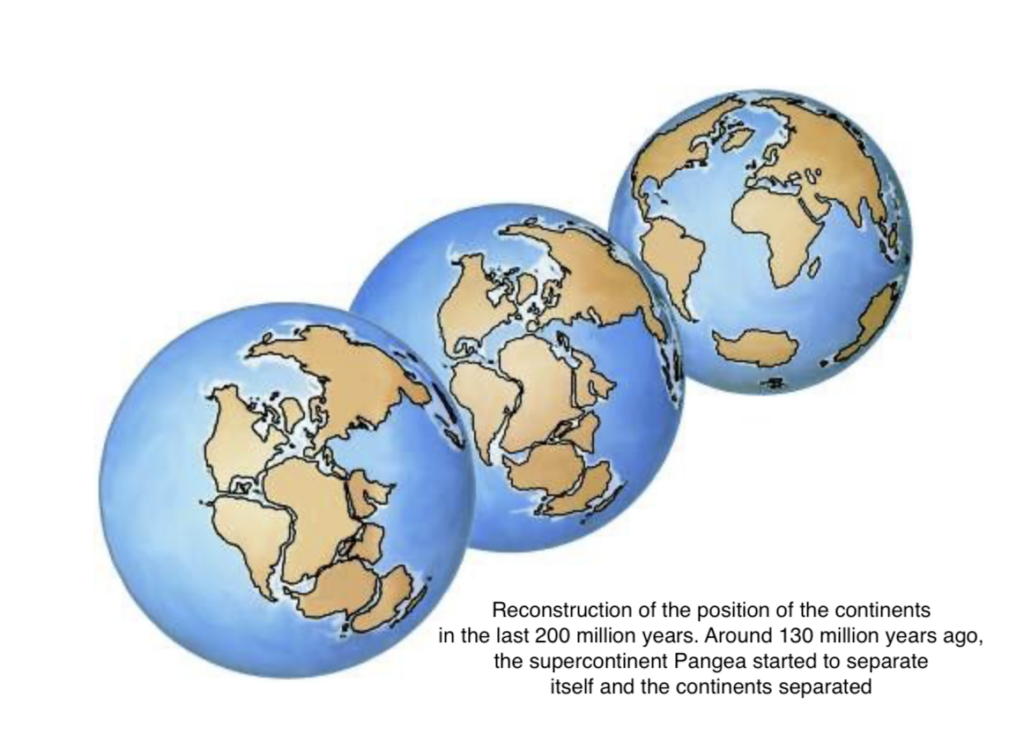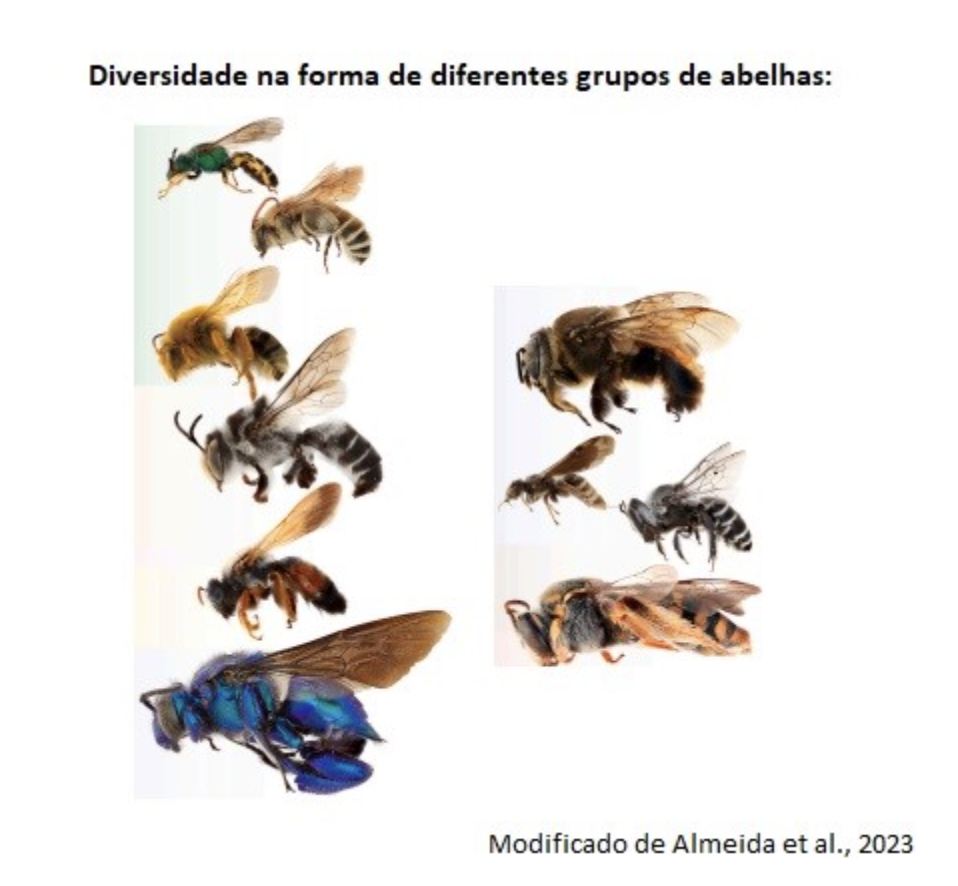A recent study, led by Dr. Eduardo Almeida, a professor at the University of São Paulo, investigated the genetics of current bees and other older species that have been preserved as fossils. Using this database, the researchers were able to comprehend the life history of these bees and where they originated. This type of study is very important so that we can understand the biodiversity around us and preserve these bees.
Leia em português
The first bees lived in South America and Africa a long time ago, over 120 million years ago. We call these bees ancestors, as they gave rise to the great diversity of bees that we see today in our gardens. Initially, bees were only present in the southern hemisphere of the Earth, and due to modifications in the land masses over millions of years, they were able to spread to the northern regions as well.

BECHLY, G. (Ed.) (2001): Ur-Geziefer. Die faszinierende Evolution der Insekten. 93 pp;Stuttgarter Beiträge zur Naturkunde; Serie C –Wissen für alle, Heft 49, Stuttgar
In this research, scientists not only discovered when and how bees spread to different parts of the world but also the significance of this fascinating history. It’s like putting together the pieces of a puzzle. Bees provide an essential ecosystem service, as they help plants reproduce and enrich the biodiversity of each location. That’s why some regions of the world have many bees and many flowers, because they have maintained this relationship for a long time.

The article helps us understand why some regions of the world have a greater diversity of bees and plants than others. For instance, within Australia, certain areas host a wide variety of bees and different plants, while in other regions of the country, this diversity drops significantly, highlighting the importance of the relationship between flora and pollinator diversity. The distribution of bees within Australia can be explained by looking at the past, millions of years ago. When there was still a connection between South America and Australia through Antarctica, this migration of bees was possible, but only to specific locations in the country.
Bees play an essential role as pollinators, and the scientific work highlights that their migration to different places and times has influenced the biodiversity of each location. In this context, the diversity of environments has played a significant role in shaping the relationships between pollinators and groups of plants throughout evolution. Recognizing the importance of pollination, it is necessary to consider the preservation of bees in order to restore the environment. In addition to maintaining biodiversity, pollination is also associated with increased food production, and beekeeping can generate highly profitable products for producers, such as honey and propolis.

Therefore, the conservation of bee populations is essential to ensure plant reproduction and the survival of healthy ecosystems. Considering the diversity in Brazil, stingless bees form a highly varied group, maintaining important relationships with the flora of different biomes, and serving as a major inspiration for Meli. To learn more about our projects focused on meliponiculture and environmental regeneration in various Brazilian biomes, keep following updates on our blog.
Reference: ALMEIDA, Eduardo AB et al. The evolutionary history of bees in time and space. Current biology, 2023.
Your donation can impact the world positively!
Subscribe to receive our Newsletter!
Find us also at Linkedin, Facebook, Twitter or Instagram
www.meli-bees.org
❤️


One Reply to “The oldest roots of bees are in the southern part of the planet, but how is it possible to discover this information? ”